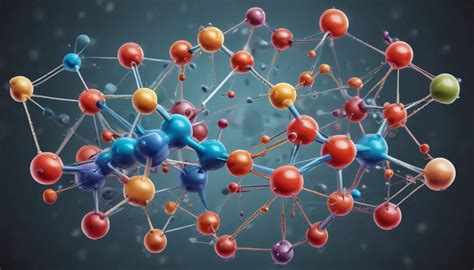Introduction

Carbon dioxide (CO₂) is a colorless, odorless, and non-toxic gas that plays a crucial role in various scientific, industrial, and environmental processes. Intermolecular forces, which hold molecules together, influence the physical and chemical properties of substances, including CO₂. This article delves into the types and strengths of intermolecular forces that operate within CO₂ molecules, their impact on CO₂’s behavior, and potential applications.
Types of Intermolecular Forces in CO₂
CO₂ molecules experience two primary types of intermolecular forces:
- Van der Waals Forces: These weak non-covalent forces arise from the interaction between two or more molecules and include:
- Dipole-Dipole Interactions: These occur between polar molecules with permanent dipole moments. Since CO₂ possesses a linear molecular geometry and no permanent dipole, it does not exhibit strong dipole-dipole interactions.
- London Dispersion Forces: These interactions originate from the temporary fluctuations in the electron distribution of nonpolar molecules, such as CO₂. These forces are relatively weak but contribute to intermolecular attraction.
Strengths of Intermolecular Forces in CO₂
The intermolecular forces in CO₂ are relatively weak compared to those in other compounds. This is primarily due to:
- Low Polarity: CO₂’s linear molecular geometry and symmetric charge distribution result in a low polarity, reducing the strength of dipole-dipole interactions.
- Nonpolar Nature: As a nonpolar molecule, CO₂ lacks a permanent dipole moment, further diminishing the strength of intermolecular forces.
Table 1: Comparison of Intermolecular Forces in CO₂ and Other Gases
| Gas | Dipole Moment (Debye) | Intermolecular Force Type | Strength |
|---|---|---|---|
| CO₂ | 0 | London Dispersion Forces | Weak |
| HCl | 1.032 | Dipole-Dipole Interactions | Strong |
| NH₃ | 1.47 | Dipole-Dipole Interactions | Intermediate |
| H₂O | 1.85 | Dipole-Dipole Interactions, Hydrogen Bonding | Strong |
Impact of Intermolecular Forces on CO₂’s Behavior
The weak intermolecular forces in CO₂ influence its physical and chemical properties:
- Low Boiling Point: Due to the weak intermolecular forces, CO₂ has a relatively low boiling point of -78.5°C at atmospheric pressure. This property allows for its easy liquefaction and storage as a liquid.
- Solubility: CO₂ exhibits low solubility in water, as the polar water molecules do not interact strongly with the nonpolar CO₂ molecules.
- Gas Behavior: CO₂ behaves as an ideal gas at low pressures and high temperatures, following the ideal gas law due to the weak intermolecular forces that do not cause significant deviations in gas behavior.
Applications of CO₂ Intermolecular Forces
The understanding of intermolecular forces in CO₂ has practical applications:
- Fire Extinguishers: CO₂ is used as a fire extinguishing agent due to its non-flammable nature and the ability to displace oxygen from the atmosphere. The weak intermolecular forces allow CO₂ to spread rapidly and penetrate deep into the fire zone.
- Carbonation: CO₂ dissolved in water forms carbonic acid, which imparts a slightly acidic taste and refreshing sensation to carbonated beverages. The intermolecular forces between CO₂ and water play a crucial role in maintaining the dissolved CO₂ content.
- Food Packaging: CO₂ is used as a modified atmosphere packaging gas to prolong the shelf life of food products. The CO₂ inhibits the growth of spoilage microorganisms by displacing oxygen and reducing their metabolic activity.
Table 2: Application of CO₂ Intermolecular Forces in Various Industries
| Industry | Application |
|---|---|
| Fire Safety | Fire extinguishing |
| Food and Beverage | Beverage carbonation |
| Pharmaceutical | Drug delivery |
| Biomedical | Anesthesia and surgery |
| Agriculture | Modified atmosphere packaging |
Table 3: Potential Applications of CO₂ Intermolecular Forces in Emerging Areas
| Emerging Area | Potential Application |
|---|---|
| Renewable Energy | CO₂ capture and storage |
| Materials Science | CO₂-based polymers |
| Nanotech | CO₂-based nanoparticles |
| Biotechnology | CO₂-induced cell differentiation |
Table 4: Advantages and Disadvantages of CO₂ Intermolecular Forces
| Advantage | Disadvantage |
|---|---|
| Weak interactions facilitate gas-like behavior | Low boiling point limits storage capacity |
| Nonpolar nature reduces affinity for polar substances | Low solubility hinders certain applications |
| Facilitates penetration and spread | Can diminish the effectiveness of intermolecular forces in other systems |
Conclusion
The intermolecular forces in CO₂, primarily London dispersion forces, are relatively weak due to the low polarity of the molecule. These forces play a significant role in determining the physical and chemical properties of CO₂, such as its low boiling point, gas-like behavior, and limited solubility in water. The understanding of these intermolecular forces has led to various practical applications, including fire extinguishing, carbonation, and modified atmosphere packaging. Ongoing research explores novel applications of CO₂ intermolecular forces in emerging areas such as renewable energy, materials science, and biotechnology. By harnessing the unique properties of CO₂, scientists and engineers can unlock new possibilities and address challenges in various industries.
